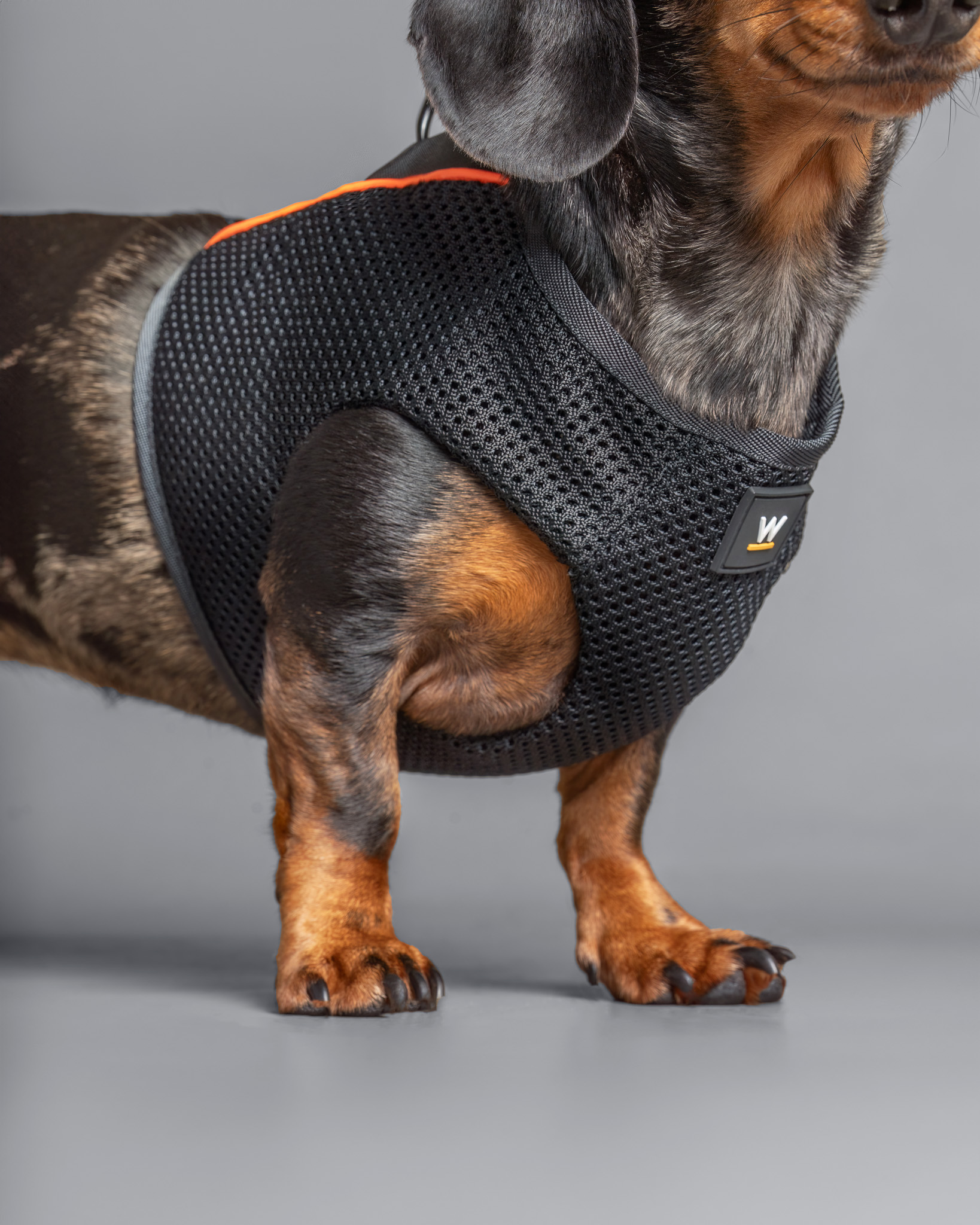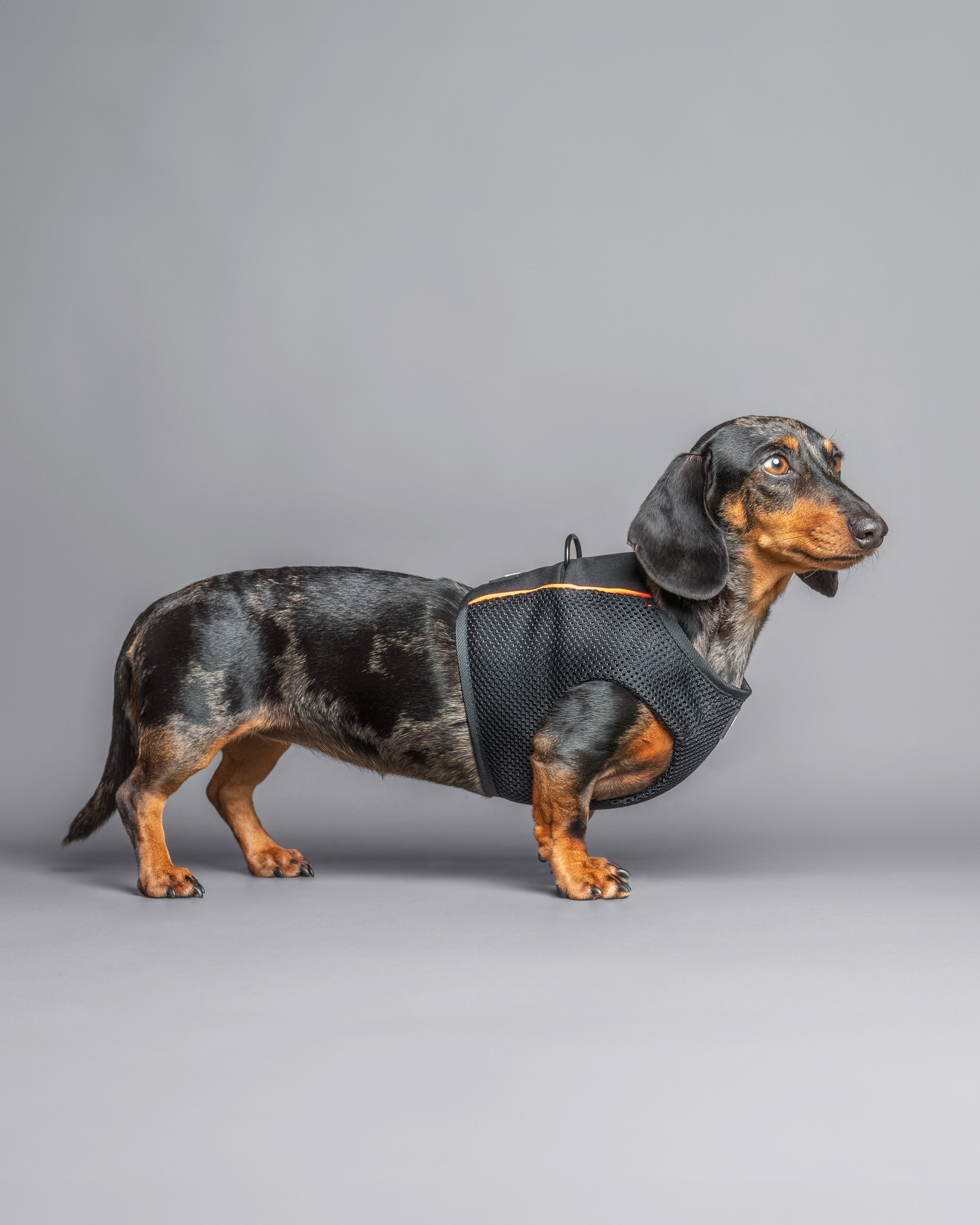New
The Science of Staying Cool
We have frequently been asked if our Harness Lite can be used as a cooling vest and that got us thinking… What is the science behind cooling vests and can these principles genuinely be applied to our designs?
Keeping dogs safe and comfortable in warm weather is a major concern of all loving dog parents. It’s about more than just shade and water when out and about—it’s about intelligent fabric choices and thoughtful design.
Cooling vests work on the principle of evaporative cooling—when water stored in the fabric slowly evaporates, it draws heat away from the dog’s body, helping regulate temperature in warm weather.
The majority of cooling vests and coats are made from absorbent cotton fabrics which hold water to be slowly released through evaporation. Wet cotton can be heavy and stretch, with the slow release of moisture, perfectly suitable for inactive situations but not necessarily active adventures.
Our Harness Lite differs is through the technical properties of performance spacer mesh which allows airflow enhanced by the natural movement of dogs to speed evaporation without adding weight or restricting movement – A natural partner for gentle, evaporative cooling on the go.
For active dogs (those out for walks wearing a harness) spacer mesh actually offers better cooling potential than a T-shirt style knit fabric, but for a very specific scientific reason: airflow and evaporation efficiency.
Here’s the breakdown:
- Structure & Airflow – Spacer mesh is a three-dimensional fabric with an open structure that traps a thin layer of air between two breathable surfaces. This creates micro-channels that allow heat and moisture to escape quickly while letting air circulate across the damp fabric. In evaporative cooling, more airflow equals faster evaporation, which means more heat is drawn away from the dog’s skin.
- Water Retention – T-shirt style fabrics (like cotton jersey) hold more water deep in the fibres, but the dense weave slows evaporation because air can’t move as freely through the fabric. This can make them feel cooler initially but less efficient at sustained cooling unless there’s significant wind or movement.
- Thermal Insulation Factor – Cotton jersey acts more like a heat sink: it stores water, which gradually warms up, so the cooling effect can plateau. Spacer mesh, by contrast, is designed to minimise heat retention by allowing continuous air exchange, so the surface temperature stays closer to the surrounding air as long as evaporation continues.
In short, for active cooling while out walking or in a breeze, spacer mesh outperforms T-shirt fabrics significantly. But in still, shaded environments, a soaked cotton fabric might feel cooler on first contact.
| Spacer Mesh | T-Shirt Style Fabric | |
| Airflow | Excellent – open 3D structure promotes continuous airflow, accelerating evaporation. | Limited – tight weave restricts airflow, slowing evaporation unless in strong wind or movement. |
| Evaporation Speed | Fast – water evaporates from surface quickly, sustaining cooling while moving or in a breeze | Slower – water trapped deep in fibres takes longer to evaporate. |
| Water Retention | Moderate – holds enough water for cooling but drains excess quickly. | High – absorbs and holds more water, can feel heavier when soaked. |
| Initial Cooling Sensation | Mild at first, builds as evaporation occurs. | Heavy – retains water, may cling to body uncomfortably. |
| Sustained Cooling | Strong – continuous airflow keeps cooling effect active | Moderate – cooling effect reduces as fabric warms and airflow is limited. |
| Weight When Wet | Light – water drains easily, mesh doesn’t cling to body. | Heavy – retains water, may cling to body uncomfortably. |
| Drying Time | Fast – dries quickly after use. | Slow – thick water retention increases drying time. |
| Best Use Scenario | Active walks, outdoor activities, warm but breezy conditions. | Still or shaded environments, short cooling bursts. |




